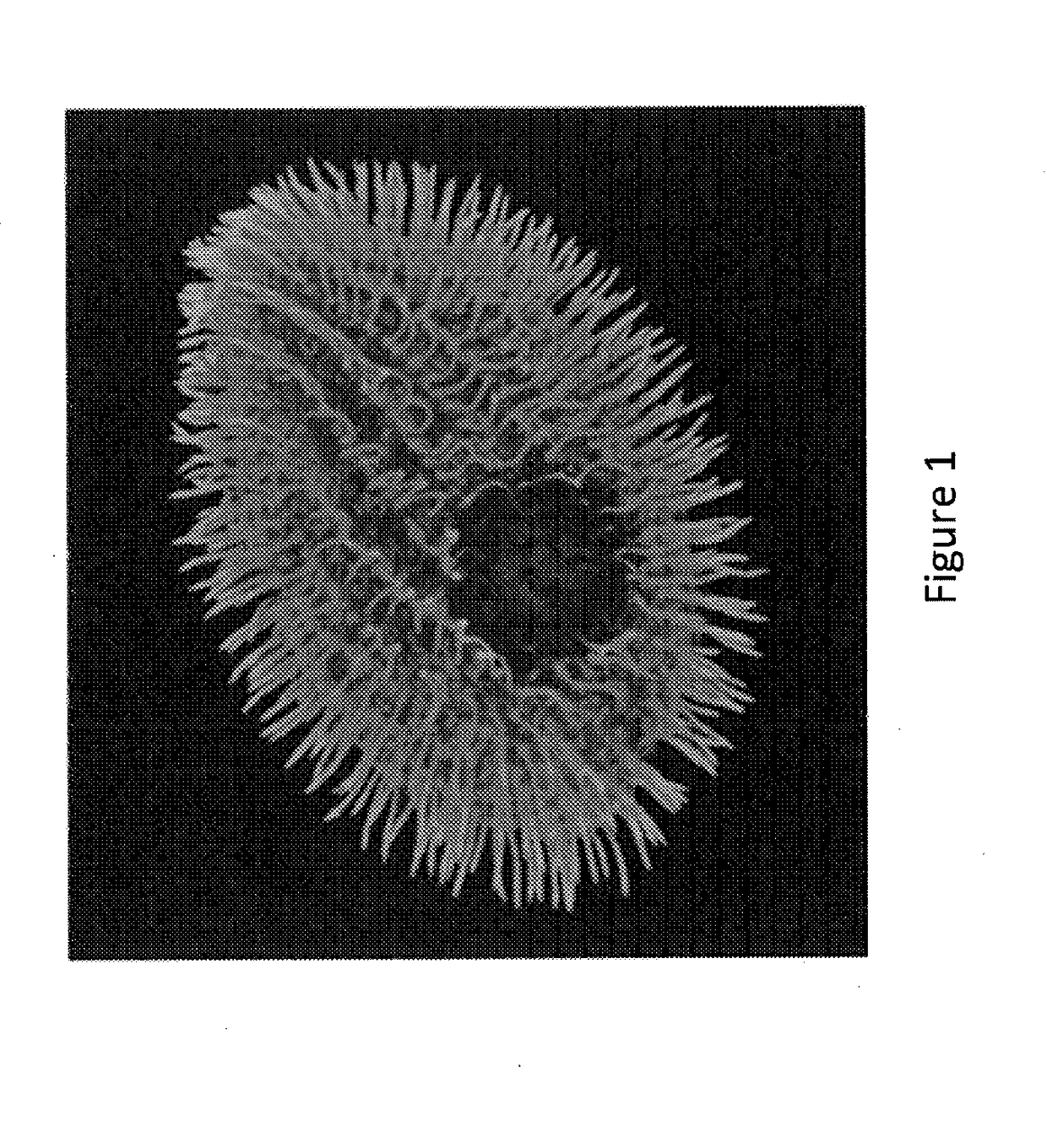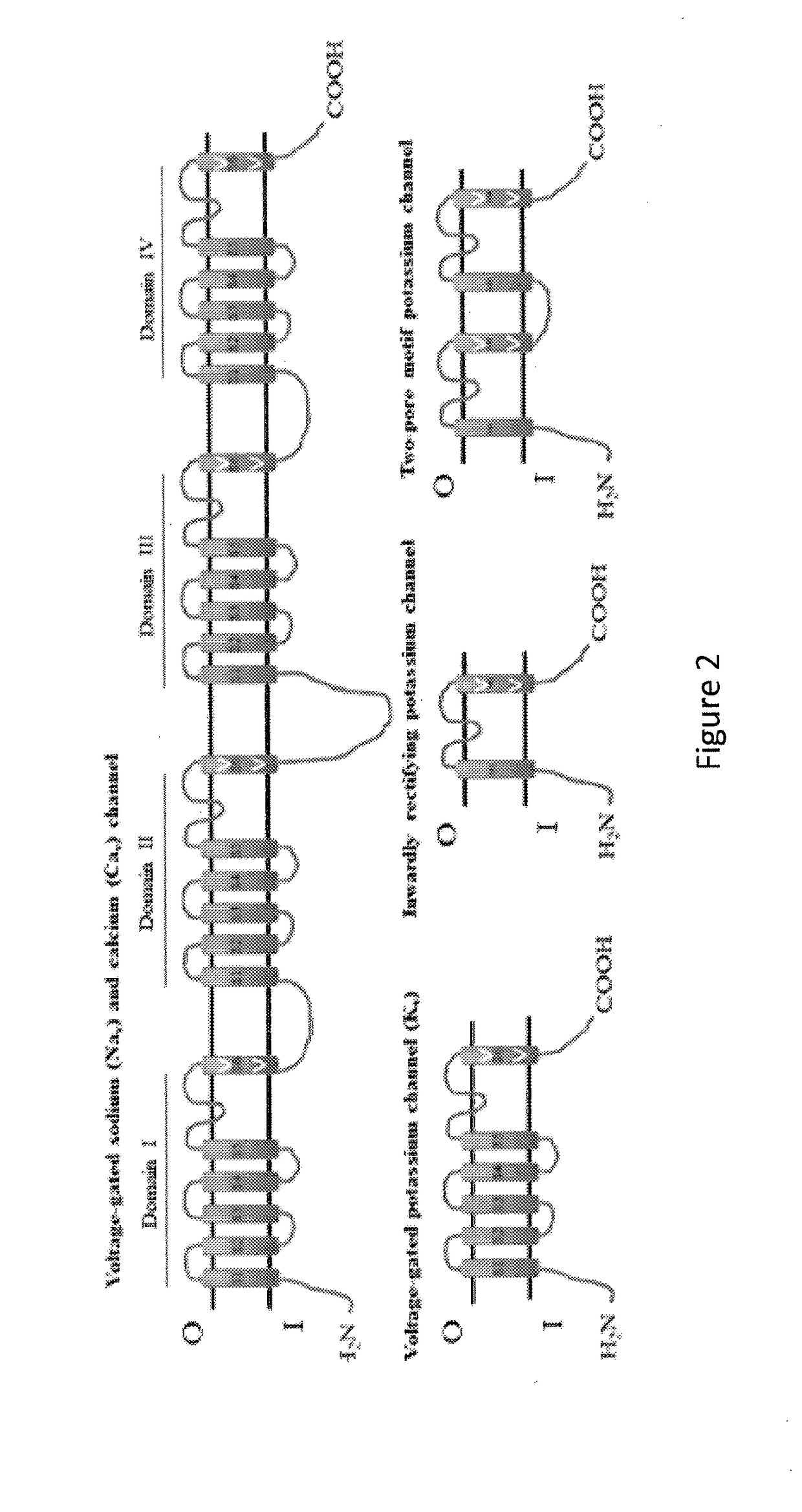Expression of voltage-gated ion channels in ciliates
a technology ciliates, which is applied in the field of expression of voltage-gated ion channels in ciliates, can solve the problems of limiting the progress of human vgic structure determination, high cost, and high resource consumption, and achieves the effects of reducing the number of vgic-based drug designs, and reducing the number of vgic-based drugs
- Summary
- Abstract
- Description
- Claims
- Application Information
AI Technical Summary
Benefits of technology
Problems solved by technology
Method used
Image
Examples
examples
[0121]The following experimental examples relate to exemplary embodiments of the invention including: (a) the expression in Tetrahymena thermophila of a recombinant form of the gene SCN10A, which encodes the α sub-unit of the human sodium voltage-gated ion channel protein Nav1.8, the generation of membrane products enriched in the α sub-unit of recombinant Nav1.8 protein, and the purification of the α sub-unit of recombinant Nav1.8, (b) the expression in Tetrahymena thermophila of the gene KCNA3 which encodes the human potassium voltage-gated ion channel subunit Kv1.3, and (c) the expression in Tetrahymena thermophila of the gene CACNA1B that encodes the α sub-unit of the human calcium voltage-gated ion channel protein Cav2.2.
[0122]These examples illustrate some preferred modes of practicing the present invention, but are not intended to limit the scope of the claimed invention. Alternative materials and methods may be utilized to obtain similar results, and the invention can be use...
PUM
| Property | Measurement | Unit |
|---|---|---|
| resting membrane potential | aaaaa | aaaaa |
| resting membrane potential | aaaaa | aaaaa |
| resting membrane potential | aaaaa | aaaaa |
Abstract
Description
Claims
Application Information
 Login to View More
Login to View More - R&D
- Intellectual Property
- Life Sciences
- Materials
- Tech Scout
- Unparalleled Data Quality
- Higher Quality Content
- 60% Fewer Hallucinations
Browse by: Latest US Patents, China's latest patents, Technical Efficacy Thesaurus, Application Domain, Technology Topic, Popular Technical Reports.
© 2025 PatSnap. All rights reserved.Legal|Privacy policy|Modern Slavery Act Transparency Statement|Sitemap|About US| Contact US: help@patsnap.com



